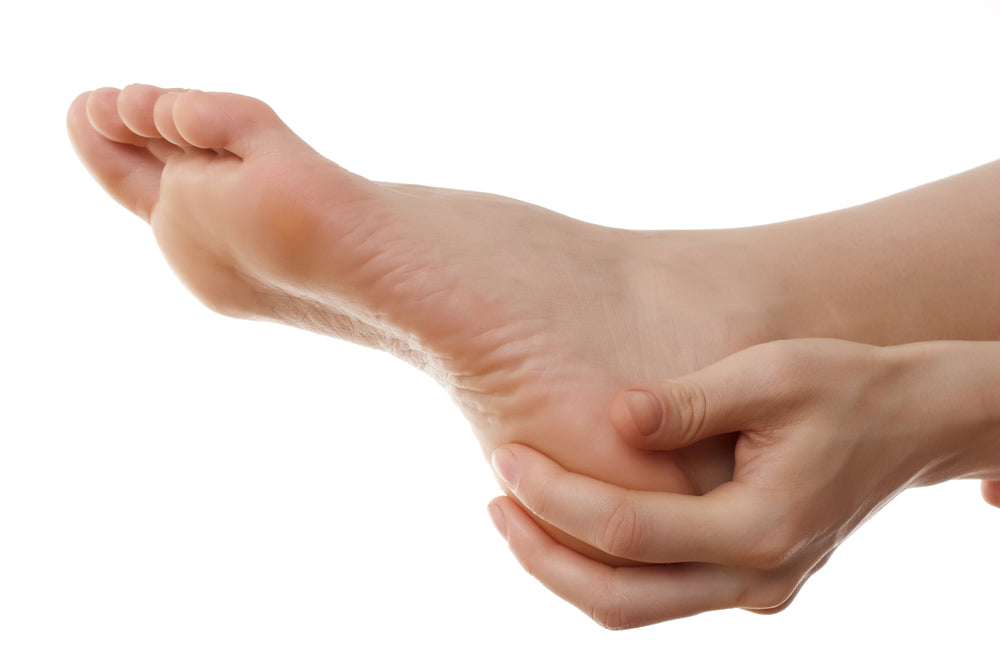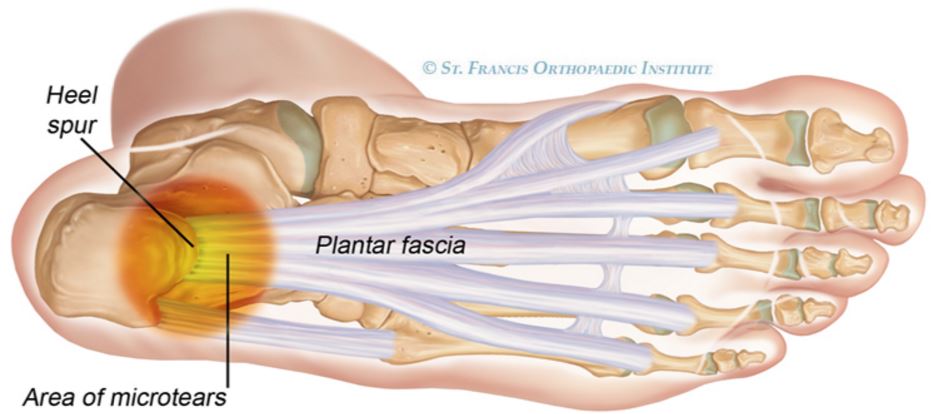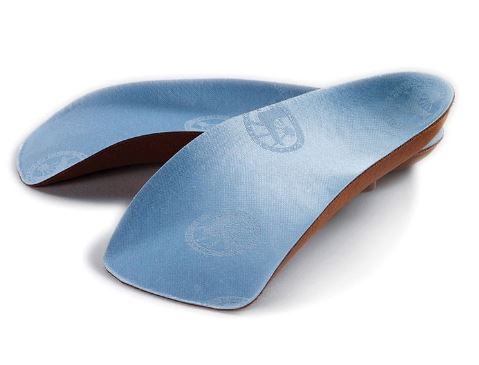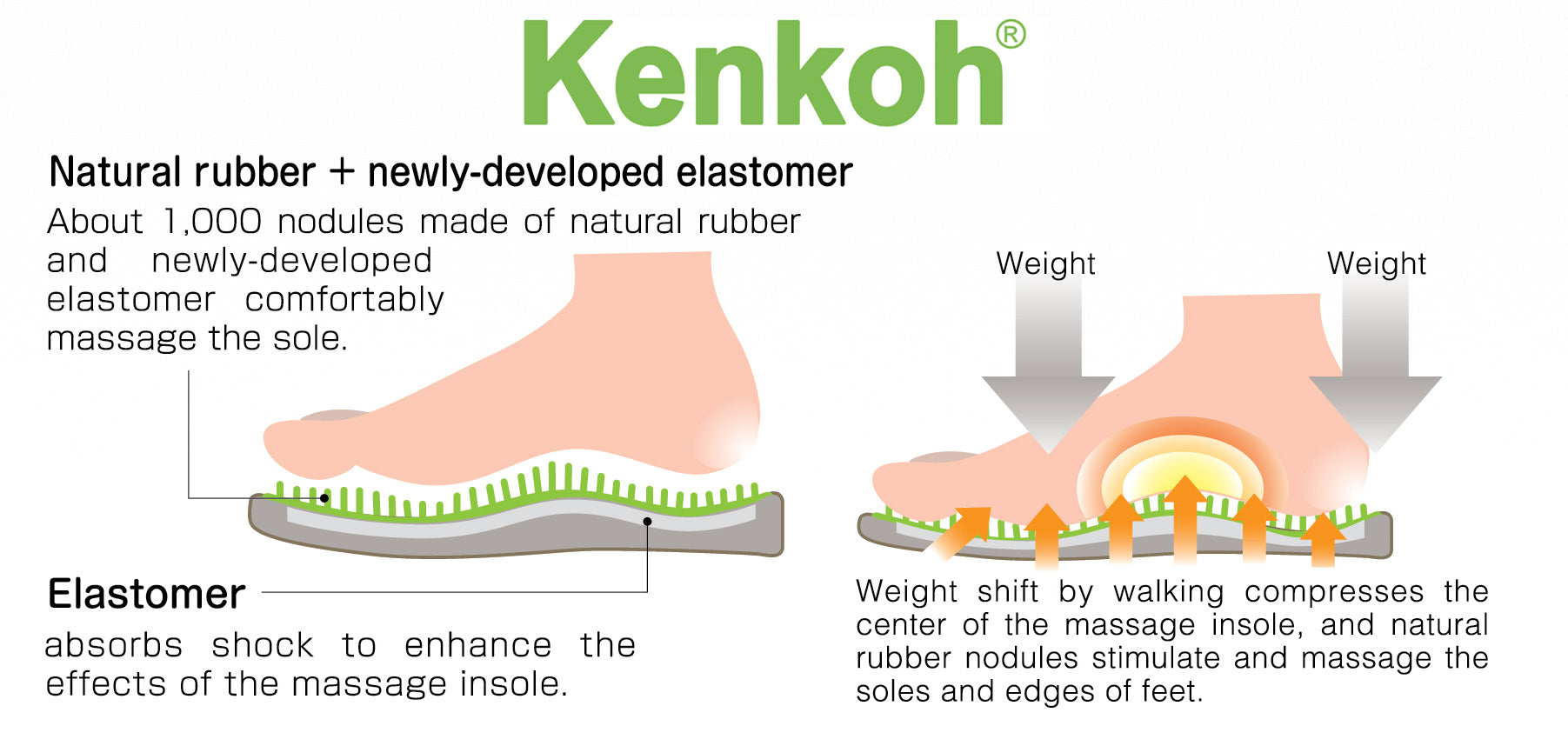Definition of Plantar Fasciitis
The plantar fascia is a thick band of tissue connecting your toes to your heel bone, running along the bottom of the foot where it supports the major arch. This fibrous tissue can become inflamed or torn, causing severe heel pain, especially in the first steps after the foot has been at rest. This stabbing pain normally dissipates after the blood flows to your feet and they begin to limber up.
This condition, called plantar fasciitis (fashee-EYE-tiss) often arises when the foot is subjected to hard, man-made surfaces like concrete or wood flooring, specifically when combined with shoes that have inadequate support. This condition is also prevalent in pregnant women, soldiers, cops, or those with obesity challenges. 
As the plantar fascia is weakened and worn down, the ankle will overcompensate for this loss of arch support by over-pronating. When a foot pronates the heel bone angles inward and the arch collapses. This flattens the arch as the foot strikes the ground in order to absorb the shock of impact.
Pain will often be felt early in the morning or after exercise. If you don’t treat plantar fasciitis, it may become a chronic condition that inhibits your level of activity, and you may develop ailments in your ankles, knees, hips, and back as it changes the way you walk.
Cause
- You’re at a greater risk for Plantar Fasciitis if you walk or run for exercise, especially if you have tight calf muscles that limit how far you can flex your ankles. Plantar Fasciitis is also commonly referred to as Runner’s Heel or Cop’s Heel.
- People with very flat feet or very high arches are more prone to Plantar Fasciitis. The condition often results in a heel spur on the calcaneus (heel bone), in which case it can be the underlying condition, and not the spur itself, which produces the pain.
- You’re more likely to get the condition if you’re a woman, if you’re overweight, or if you have a job that requires a lot of walking or standing on hard surfaces.
- Walking barefoot can aggravate the condition.
Prevention & Treatment
The World Has Been Paved Much More Quickly Than The Foot Has Evolved
As our urban environment changes, and so too the hard materials humans use to build it, our feet are subjected to unnatural positions. While our methods of construction have evolved, our foot bones and muscles have predominantly remained the same. Thus, to maintain a neutral, proper alignment our shoes must support and contour to the natural shape of the foot.
The most essential method to prevent and treat injury to the plantar fascia is good arch support, every day. Both orthotic shoes or inserts can be used to mitigate the problem and can be found in dressy, casual, or athletic styles.
Once the arch is raised, our bones and ligaments are able to maintain a neutral alignment across the sole. This allows our body weight to be evenly distributed, allowing our top heavy frames to balance perfectly and walk upright.
Various shoe brands like Birkenstock and Finn Comfort are renowned for their contoured footbeds that not only supply optimal support to all of our arches, but also for their styles with deep heel cups and metatarsal cushions. All three of these features are typical for an orthotic, however, with any industry, some brands have mastered this feat more than others. Aetrex Lynco, for example, provides soothing cushioning combined with high levels of medial and metatarsal arch support.
Happy Feet Plus specializes in carrying a wide spectrum of healthful shoes to provide comfort and a custom fit for long-term wear and a reduction in the chance of re-injury. Check out our page on shopping for plantar fasciitis relief for a wide selection of styles and fits.












